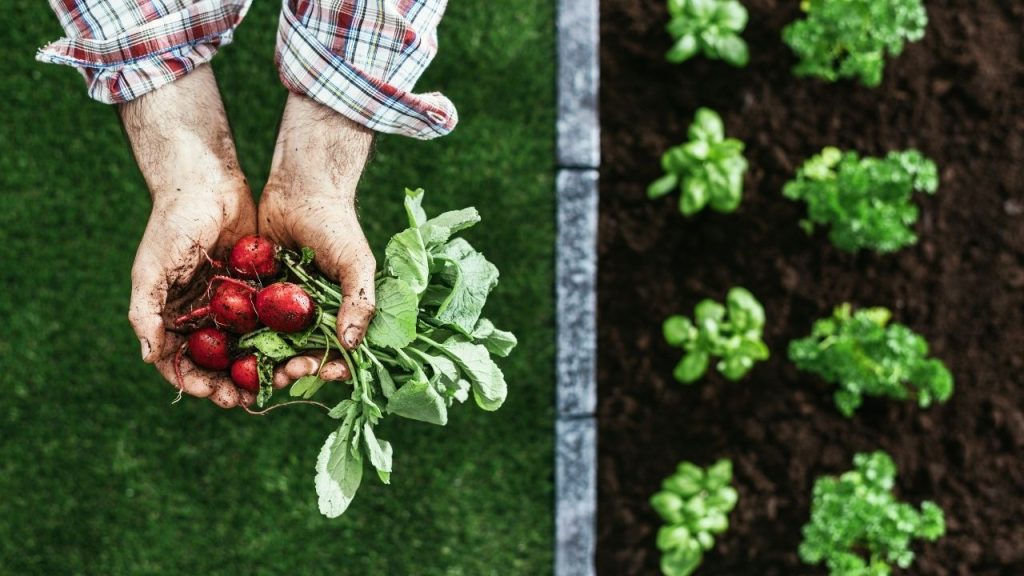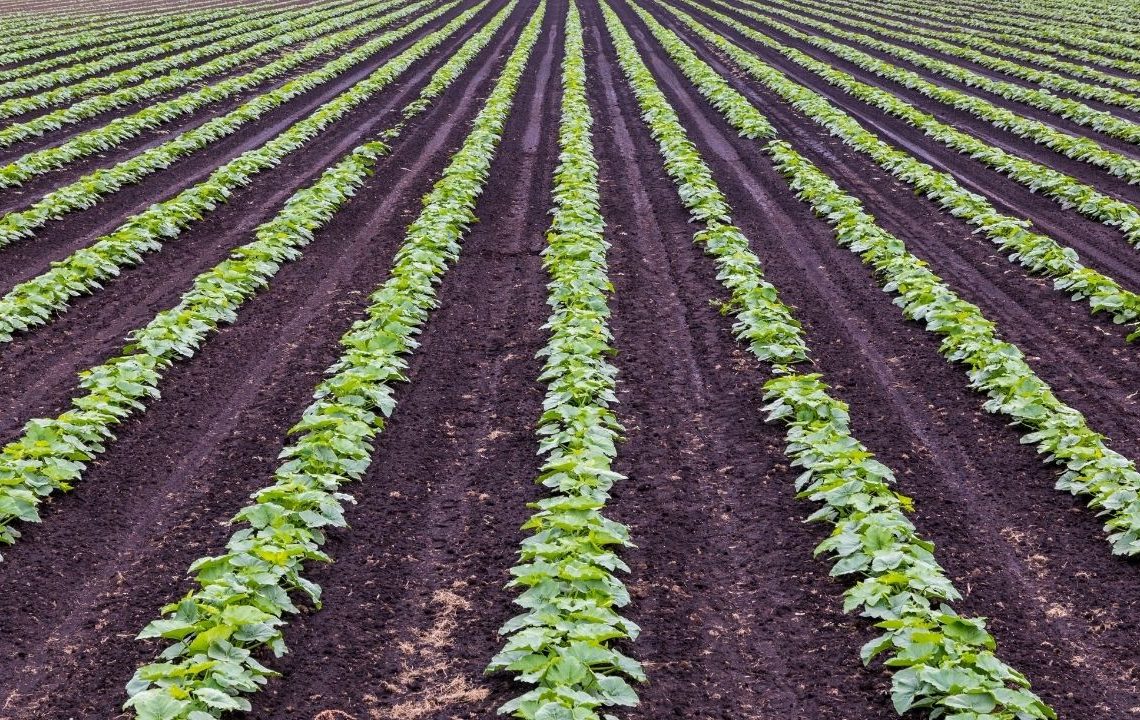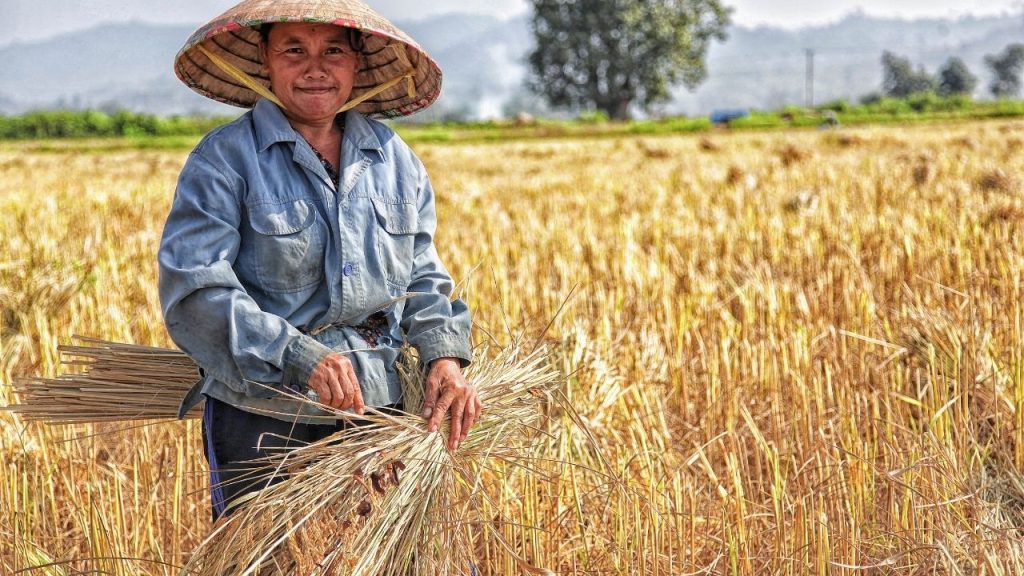In Layman’s terms, farming is a procedure of growing crops and keeping livestock animals for food and other purposes. For ages, farming has long been the most cherished practice for human survival around the planet. However, each country’s farming or agricultural processes are unique. Especially, when we talk about an agricultural country like India, various types of farming and agriculture, as well as their related activities come as a major source of livelihood for over 80% of people in the rural areas. Besides, it offers employment to more than 52% of labour.
Discussing the contribution of Farming in India’s Gross Domestic Product (GDP) it comes somewhere in between 14 to 15%. India’s farmers use a variety of farming techniques depending on the soil quality, land, agro-climate, and irrigation infrastructure. Here, we list down the most common types of farming practiced in India.
Major Types of Farming Methods Employed by Farmers in India
Subsistence Farming
Many farmers in India adopt this farming practice due to a lack of money. Most of them are poor and cannot purchase high-yielding seeds and crop fertilizers. These farmers also own a small piece of land and will be without irrigation or electricity.
The entire family is involved in the food production process. Moreover, farmers maintain production as the whole for eating with the family. These farmers plant cash crops such as cotton, sugarcane, and oilseeds if they can afford irrigation facilities and electricity.
There are times when the farmers may use a small patch of land to farm while using the ‘slash and burn‘ method. People call this practice as primitive subsistence farming.
Farmers can choose between dry land and wetland farming in these types of farming methods, depending on rainfall and irrigation availability. Crops such as maize, jowar, bajra, and any pulse/gram crop get produced in places with limited annual rainfall. We must mention that farmer grows these crops once in a year.
On the contrary, the same farmers often cultivate crops twice a year in wetland farming where enough irrigation infrastructures are available. Kharif (July to October) and Rabi (November to March) are the two seasons included in this list. During these seasons, farmers primarily plant rice, sugarcane, and various vegetables in wetlands.
The following are the main characteristics of subsistence farming:
- The entire family is reliant on land farming.
- The majority of the process involves farming by hand, without the use of any tools.
- Traditional farming techniques are used to grow the crops.
- Families use small-scale lands for the farming purpose ( mostly in case of primitive subsistence farming).
- Crop yields often come low.
- The farmer’s family consumes the entire crops and there is no way to sell the crop commercially.
Shifting Agriculture
Farmers clear a small area of forest land for growing crops in these types of farming techniques. Tribal farmers mostly did tribal farmers. Besides, the purpose is accomplished by cutting down dead trees and burning tree trunks, branches, and waste wood.
Farmers typically plough these types of fields for around 2 to 3 years as soil fertility declines. They then go on to other forest regions and go through the same process once again. Farmers use these types of agriculture systems to cultivate crops like millets, corn, maize and vegetables.
You should anticipate a fairly low yield /acre in this farming strategy. Moreover, different Indian states have different names for these types of farming in India. In Telangana and Andhra Pradesh, this is known as Podu, in Kerala as Ponam, Madhya Pradesh as Bera, and Assam as Jhum. However, due to concerns with soil erosion in forest areas, the government prohibited this farming practice a few years back.
The following are the main characteristics of Shifting Agriculture:
- Farmers remove forest trees to practice this type of farming
- In most cases, the land does not entail any form of cultural technique, such as ploughing.
- Farmers sow plant seeds in the soil.
- This farming approach works only for 2 to 3 years since the crop output declines as the nutrients from the ground are leached out (degraded soil fertility due to soil erosion).
- Shifting agriculture comes as one of those types of agriculture in India where poor and underprivileged class carries out farming practices.
Plantation Farming
Plantation farming enlists itself in the category of highly different types of farming popularized by the British in the nineteenth century. It typically refers to the plantation of single-crop orchards or crops like tea, spice crops, rubber, coffee, coconut, lime, oranges, and apples.
Plantation agriculture necessitates adequate capital and cultivation resources such as high-quality irrigation, innovative farming techniques, irrigation infrastructure, scientific farming, necessary machinery, fertilizers, and high-yielding crop seeds.
Plantation farming, unlike other types of farming, is extremely beneficial to the export industry. The majority of the orchards yield harvests over a long period of time. Few of the crops take years to reach the harvesting phase, yet they are worthwhile to grow since the profits are enormous. The majority of plantation agriculture takes place in tropical climates.
The following are the main characteristics of plantation agriculture:
- Farmers use large estates to raise the crops.
- These types of farming require bigger manpower and labour.
- The required investment is substantial.
- Farmer applies modern technique to this practice.
- Crops grown are meant mostly for export purpose.
Intensive Farming
Intensive Farming is a method of cultivation that allows for a high output per unit area. Farmers use fertilizers and pesticides extensively, especially in areas where irrigation is accessible. They also use different types of farming techniques and machinery to plant the seeds of high producing crops. Farmers carry out Intensive farming/agriculture as a result of these collaborated efforts and practices. People also call this industrial agriculture in some locations.
Dry Farming
Drought-prone locations have fewer irrigation facilities, thus dry farming comes as the most feasible option to grow crops. Dry farming comes as one of those types of farming where most of the Drought-resistant crop varieties are grown by farmers. Farmers do that in places with low annual rainfall averages. In dry agriculture, there may be some partial irrigation. In dry agriculture, you might expect reduced or marginal yields.
Mixed & Multiple Farming
Mixed farming is nothing more than cultivating agricultural crops and taking care of cattle at the same time. On the other hand, multiple farming refers to the cultivation of multiple crops on the same land. This process exhibits two separate crops with different maturation cycles to not compete for growing time and nutrients. Farmers use these farming strategies in areas with a high likelihood of rain and superior irrigation facilities.
Crop Rotation
In these types of agriculture, farmers grow multiple crops rotationally in the same field instead of growing the same crop for more than a year to boost soil fertility or secure nitrogen levels in the soil. farmers do it in a predetermined order.
The length of time it takes to finish a rotation varies on the type of crop a farmer is trying to cultivate. Some may finish inside a year, while others may take more time (a year or two). Farmers further plant crops like Gram or pulses after cereal crops because leguminous crops can maintain the soil’s nitrogen levels and improve the soil’s richness. The crop chosen for rotation is determined mostly by the soil type. Crops such as sugarcane or tobacco get cycled with cereal crops.
Permanent Agriculture
Farmers settle down at one location to begin growing crops in these types of farming techniques. Farmers practice Permanent farming universally Still, if we talk about Indian farmers, they use it across north Indian states like Uttar Pradesh, Punjab, Haryana and so on.
Terrace Farming
Terrace farming is simply about cultivating crops on high terrains or hilly areas. This approach works wonders in locations that are way above sea levels ( states like Himachal Pradesh, Uttarakhand, Jammu and Kashmir, Assam)
During these types of farming, farmers incise high terrains and slopes to create a terrace. They further use the land same way as they use it for permanent cultivation Moreover, Farmers can avoid soil erosion with this farming approach.
Organic Farming
Organic farming is the one where farmers use organic ways and methods to carry out farming practices. In simple terms, we can say that no chemical based fertilizers or pesticides makes way into such practice.
In simple terms, we can deem it one of the most sought after farming methods that use organic fertilizers like compost fertilizer, green fertilizer, and bone meal. This method largely focuses on techniques like crop rotation.
Agriculture has always been an aspect of human life, dating back to the dawn of civilization. As the first human planted seeds, they knew seeds will help them to grow more food, and that triggers the birth of agriculture, as well as the first farmer.

Organic Agriculture’s Importance and Benefits
In a country like India, about half of the Indian population is involved in agriculture, which generated 17–18% of the country’s GDP. Organic Agriculture has various benefits and here we list a few of them.
1. The Fundamentals Stay Unchanged
From old times to the present, the fundamentals of agriculture have remained unchanged. You plant the seeds, water and fertilize them, and finally harvest them in the same way you did before. Instead of growing our own food, we now rely on farmers to do so for us.
Farmers are the backbone of India’s food sector. And if they stopped existing, our food industry will become limited in number and diversity. And, as we all know, agriculture and farming are the only businesses that mankind can count on to last the test of time.
2. Innovative Farming Techniques
In the twentieth century, India’s agriculture industry boomed, and with it came the insight that if each plant could generate more output, a farmer could work the same hours and potentially multiply their yield and profit.
Chemical companies accelerated the development of artificial fertilizers, various soil conditioners; pesticides that would help a plant grow rapidly, yield more fruits and use less water. Despite allowing farmers to feed more people while making more money, the chemicals began to degrade soil quality.
Adding more pain to it, research began to emerge demonstrating that all of these types of farming methods caused harm to wildlife and groundwater, raising concerns about human health. This is where Organic farming came as a savior.
Despite using chemical-free fertilizers and pesticides, the farmer can expect more output with every harvest.
3. Keeping it Simple and Natural
Organic farming began to resurface as a way to offer high-quality crops and return to the traditional farming ways of our forefathers. Fruit and vegetables became health-friendly and you can now have the best-tasting food available by eliminating chemical use.
As organic food became more popular, co-ops and health food stores sprung up, and today, entire supermarket chains are devoted to organic produce. It would have been difficult or impossible 10 to 15 years ago.
What are Various Types of Organic Farming?
Usually, there are two types of organic farming :
- Integrated organic farming
- Pure organic farming
Pure organic farming is largely about eliminating the usage of all kinds of unnatural chemicals. In these types of Organic farming, the fertilizers and pesticides are secured from only natural sources like cow dung, garbage compost, green bone meal or blood meal.
Integrated organic farming on the other side is a recurring, zero-waste process, where end products from a single procedure get turned into nutrients for another procedure. The whole method facilitates the proper utilization of available resources while eventually increasing production efficiency.
Are there any Disadvantages of Organic Farming?
Just like any other process of the phenomenon, even organic farming comes with its own set of disadvantages.
Small Scale Production
The yield secured via organic farming often comes less in comparison to that obtained via non-organic farming. So, it is almost impossible for the farmers to practice it on a large scale. Even when they do it, the process goes hectic and time-consuming, without bringing the desired return on investment.
Organic Products are Cost-Effective
Let’s face the sad truth – Organic products are expensive than chemical products. So, you can only afford a part of it with your available monthly budget. This comes as one of the biggest reasons why a larger population stays deprived of its unending benefits.
Shorter Shelf Life
Organic products don’t have a longer shelf life. So, you cannot store them for more time. Non-organic products, on the other hand, come better at this specific aspect.
Conclusion
Agriculture, along with its associated sectors, is undoubtedly the biggest source of revenue for most of the Indian population, especially in rural areas. With bigger and better innovations making their way into every other sector, we can surely expect the Agricultural sector as well to keep up with the trends in the coming years.








